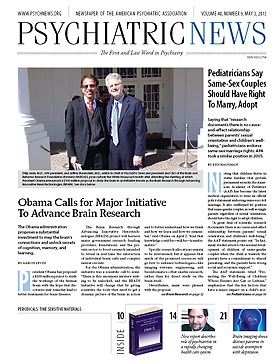The sudden onset of visual hallucinations in elders should arouse suspicion about the presence of Lewy body disease, as should the development of delirium in elderly medical or surgical inpatients. The diagnosis is important because these individuals should not be treated with antipsychotics other than quetiapine (clozapine has been suggested, but is, in my opinion, too toxic for elders). Additional treatment-related features of Lewy body disease are that the visual hallucinations respond well to the anticholinesterases used to treat Alzheimer’s disease and are aggravated by anticholinergic agents and the dopamine agonists used to treat Parkinson’s disease.
Lewy body disease (also, and perhaps unfortunately, termed dementia with Lewy bodies) is probably the second most common neurodegenerative disease that causes severe cognitive impairment in elders. About 20 percent of cases diagnosed clinically as Alzheimer’s disease also have abundant neocortical Lewy bodies, but pure Lewy body disease is rare.
Lewy body disease is characterized pathologically by the presence of intraneuronal synuclein-containing Lewy bodies throughout the cerebral cortex. It belongs to the group of diseases now known as synucleinopathies, the most common of which is Parkinson’s disease. The basic pathological difference between Lewy body disease and Parkinson’s disease is the location of Lewy bodies; if densely present only in the substantia nigra, the clinical syndrome is Parkinson’s disease. The distinction between Lewy body disease and Parkinson’s disease with dementia is arbitrary and is based on whether cognitive or motor symptoms begin first.
At a clinical level, the distinction between Lewy body disease and Alzheimer’s disease is frequently unclear. Most Lewy body cases co-occur with Alzheimer’s disease, and these cases are often called the Lewy body variant of Alzheimer’s disease.
The visual hallucinations of Lewy body disease are quite characteristic. They are well-formed images of adults or children whose identity is not known and who do not speak. They are often seen to enter or exit a room, and the patient has no explanation of why they are there. The hallucinations are at times terrifying, but more commonly the patient is just puzzled. They usually occur with clear sensorium, but vague hallucinations may occur on going to or awakening from sleep. Patients frequently report that they cannot distinguish between events that occur in dreams and events that occur in reality. Most important in differentiating Lewy body disease from late-onset schizophrenia or other psychotic disorders is that there is no delusional elaboration of the visual hallucinations. If given an antipsychotic agent, these individuals are prone to developing acute extrapyramidal syndromes and may develop neuroleptic malignant syndrome.
Some persons with Lewy body disease present with a history identical to Alzheimer’s disease. Additional factors concerning persons with Lewy body disease include the presence or history of sleepwalking and REM sleep behavior disorder. Unlike Alzheimer’s disease, in which most patients lack insight into their cognitive difficulty, persons with Lewy body disease tend to be aware of their deficits and can often speak ofthemselves as experiencing hallucinations. There is also a tendency in Lewy body disease for periods of apparent remission, when patients seem their old selves. They may have difficulty orienting their bodies in space and frequently fall or bump into doorframes. They do poorly on visuomotor tasks such as drawing simple geometrical figures or the face of a clock. They frequently have mild Parkinson’s symptoms, which include unilateral resting tremor and rigidity, loss of facial expression, drooling, and difficulty maintaining volume of speech sufficient to be heard clearly. Unfortunately, these symptoms do not respond to antiparkinson agents, and the use of antiparkinson agents may precipitate or worsen hallucinations.
Treatment begins by discontinuing agents with strong anticholinergic activity such as diphenydramine and bladder relaxants. An attempt should be made to reduce the dose of dopaminergic agents in Parkinson’s patients. Treatment with quetiapine is indicated primarily if the patient is disturbed by the hallucinations; otherwise, cholinesterases are the most appropriate drug treatment. Finally, and perhaps most important, is the education of patients and family members. Psychiatrists may find that some of the abundant materials that can be found online may be useful for this purpose. ■

